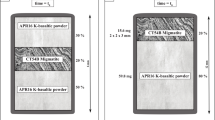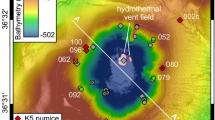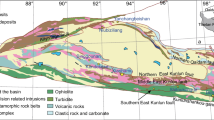Abstract.
Products of voluminous pyroclastic eruptions with eruptive draw-down of several kilometers provide a snap-shot view of batholith-scale magma chambers, and quench pre-eruptive isotopic fractionations (i.e., temperatures) between minerals. We report analyses of oxygen isotope ratio in individual quartz phenocrysts and concentrates of magnetite, pyroxene, and zircon from individual pumice clasts of ignimbrite and fall units of caldera-forming 0.76 Ma Bishop Tuff (BT), pre-caldera Glass Mountain (2.1–0.78 Ma), and post-caldera rhyolites (0.65–0.04 Ma) to characterize the long-lived, batholith-scale magma chamber beneath Long Valley Caldera in California. Values of δ18O show a subtle 1‰ decrease from the oldest Glass Mountain lavas to the youngest post-caldera rhyolites. Older Glass Mountain lavas exhibit larger (~1‰) variability of δ18O(quartz). The youngest domes of Glass Mountain are similar to BT in δ18O(quartz) values and reflect convective homogenization during formation of BT magma chamber surrounded by extremely heterogeneous country rocks (ranging from 2 to +29‰). Oxygen isotope thermometry of BT confirms a temperature gradient between "Late" (815 °C) and "Early" (715 °C) BT. The δ18O(quartz) values of "Early" and "Late" BT are +8.33 and 8.21‰, consistent with a constant δ18O(melt)=7.8±0.1‰ and 100 °C temperature difference. Zircon-melt saturation equilibria gives a similar temperature range. Values of δ18O(quartz) for different stratigraphic units of BT, and in pumice clasts ranging in pre-eruptive depths from 6 to 11 km (based on melt inclusions), and document vertical and lateral homogeneity of δ18O(melt). Worldwide, five other large-volume rhyolites, Lava Creek, Lower Bandelier, Fish Canyon, Cerro Galan, and Toba, exhibit equal δ18O(melt) values of earlier and later erupted portions in each of the these climactic caldera-forming eruptions. We interpret the large-scale δ18O homogeneity of BT and other large magma chambers as evidence of their longevity (>105 years) and convection. However, remaining isotopic zoning in some quartz phenocrysts, trace element gradients in feldspars, and quartz and zircon crystal size distributions are more consistent with far shorter timescales (102–104 years). We propose a sidewall-crystallization model that promotes convective homogenization, roofward accumulation of more evolved and stagnant, volatile-rich liquid, and develops compositional and temperature gradients in pre-climactic magma chamber. Crystal + melt + gas bubbles mush near chamber walls of variable δ18O gets periodically remobilized in response to chamber refill by new hotter magmas. One such episode of chamber refill by high-Ti, Sr, Ba, Zr, and volatile-richer magma happened 103–104 years prior to the 0.76-Ma caldera collapse that caused magma mixing at the base, mush thawing near the roof and walls, and downward settling of phenocrysts into this hybrid melt.
Similar content being viewed by others
Author information
Authors and Affiliations
Additional information
Electronic Publication
Rights and permissions
About this article
Cite this article
Bindeman, I.N., Valley, J.W. Oxygen isotope study of the Long Valley magma system, California: isotope thermometry and convection in large silicic magma bodies. Contrib Mineral Petrol 144, 185–205 (2002). https://doi.org/10.1007/s00410-002-0371-8
Received:
Accepted:
Issue Date:
DOI: https://doi.org/10.1007/s00410-002-0371-8




